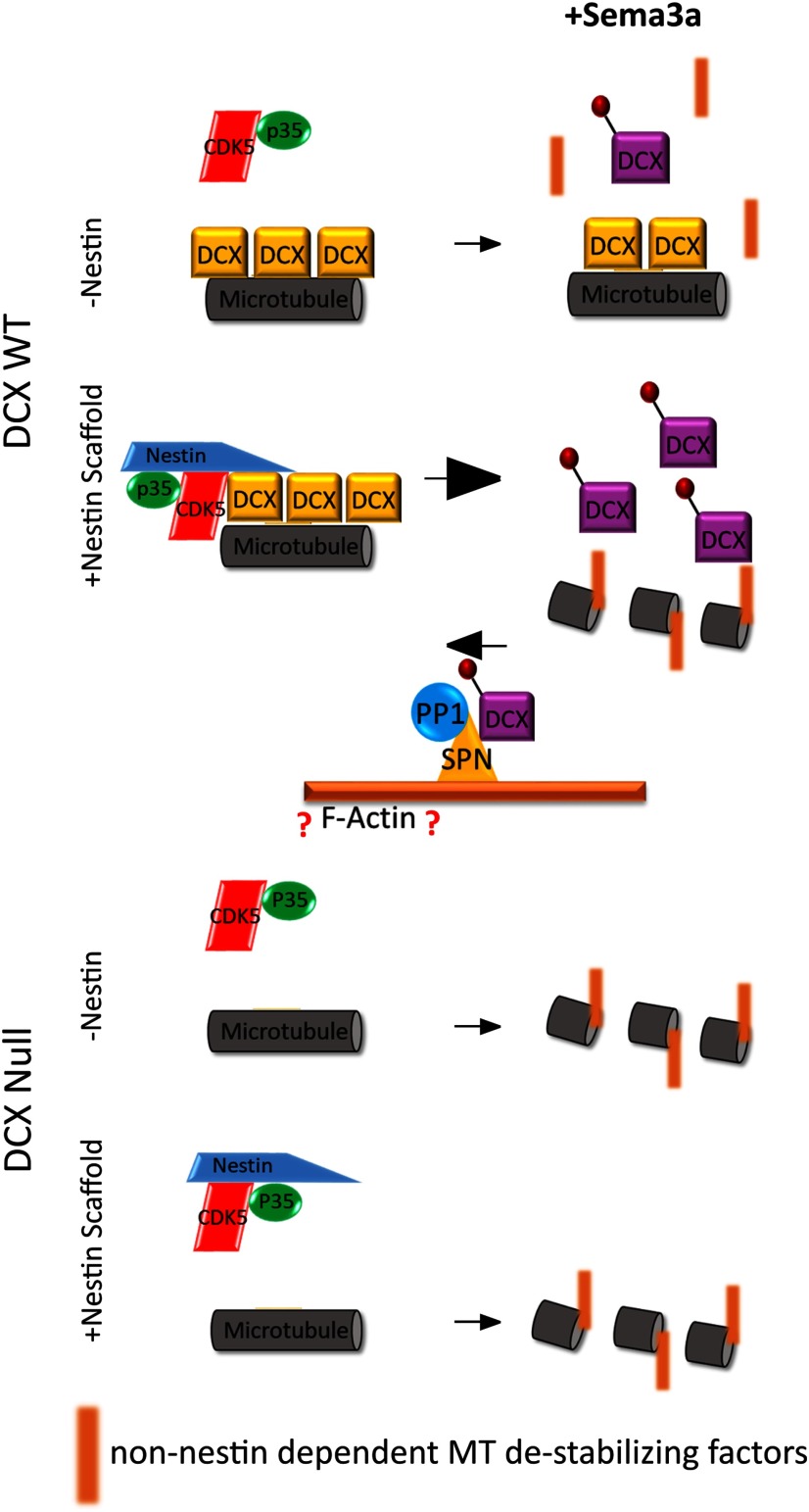Figure 11.
Model of nestin-mediated scaffolding of Cdk5 for modulation of DCX phosphorylation. Model for how nestin increases cdk5 phosphorylation of DCX by scaffolding: in the absence of nestin (-Nestin; top), non-phospho-DCX is bound to MTs and inefficiently phosphorylated by cdk5/p35. In the presence of nestin (+ Nestin scaffold; bottom), DCX becomes associated with cdk5/p35, increasing the efficiency of DCX phosphorylation. DCX phosphorylation results in dissociation of DCX from MTs, thus allowing remodeling by additional factors (red bars). In this model, we also depict data from others that showed that the actin-associated SPN, which scaffolds PP1, potently dephosphorylates DCX. In our model, the level of phospho-DCX is determined by the relative opposing activities of the two regulatory complexes nestin/cdk5/p35 or SPN/PP1. However, in Dcx-null neurons (bottom half), nestin no longer has an effect on sema3a sensitivity. Without DCX MT binding and stabilization, GCs retract and are sensitive to Sema3a independent of nestin. Nestin-mediated enhancement of Sema3a sensitivity is thus lost in Dcx-null neurons.

